This article was co-authored by Jonathan Frank, MD. Dr. Jonathan Frank is an Orthopedic Surgeon based in Beverly Hills, California, specializing in sports medicine and joint preservation. Dr. Frank's practice focuses on minimally invasive, arthroscopic surgery of the knee, shoulder, hip, and elbow. Dr. Frank holds an MD from the University of California, Los Angeles School of Medicine. He completed an orthopedic residency at Rush University Medical Center in Chicago and a fellowship in Orthopedic Sports Medicine and Hip Preservation at the Steadman Clinic in Vail, Colorado. He is a staff team physician for the US Ski and Snowboard Team. Dr. Frank is currently a scientific reviewer for top peer-reviewed scientific journals, and his research has been presented at regional, national, and international orthopedic conferences, winning several awards including the prestigious Mark Coventry and William A Grana awards.
This article has been viewed 328,240 times.
There are some times when you may feel like your knee just needs to be popped. This is often a perfectly normal thing that does not signal a problem in the knee and can be done quite easily.[1] All it takes is some intentional movement of the joint and, in some cases, simultaneous pressure on the joint. However, if cracking your joint causes pain and discomfort, it's important to get it looked at by a doctor, as this can signal a medical problem that needs treatment.
Things You Should Know
- Sit in a chair or lay on your back with your leg straight out. Lift and bend your knee several times until the joint cracks.
- Step forward with your other leg and do a slow, controlled lunge to crack the knee joint in your back leg.
- Place your feet hip-width apart and slowly move into a squat position to crack both knees.
Steps
Bending Your Knee Joint
-
1Sit in a chair or lay down on your back. If you want to pop your knee gently and with some control, it's best to take all pressure off of it. Sitting or lying down will allow you to move it intentionally and control exactly when the popping occurs.[2]
-
2Stretch your leg out straight. Extend your knee joint as straight as it can go. This puts the joint in its fully extending position, potentially moving your ligaments and knee cap across your leg bones enough to move air in the joint, which causes a pop.
- It may be that this movement alone is enough to crack your knee.
Advertisement -
3Bend your leg, if necessary. If your knee doesn't crack just by extending your leg, then move the joint into its completely opposite position. If you are sitting, simply bend the bottom of your leg in towards the chair. If you are laying down, raise your knee in the air and pull your foot in towards your buttocks.[3]
- To contract the joint completely while sitting in a chair, you may need to move your buttocks forward to the edge of the chair. This will allow you to bend the knee further.
- Bending your leg completely will move the bones and ligaments across each other, causing a pop when ligaments go over uneven bones or when air moves through the joint.
-
4Extend and contract the knee joint until it pops. It can take several rounds of moving the knee in this manner to get the joint to crack. Just be sure to move back and forth slowly, so that you can stop the movement if it becomes painful or uncomfortable.
- By moving your knees from extension to flexion and back again, you can help your kneecap fully engage into the center of your knee joint.[4]
- If this gets your knee to crack there's nothing wrong with that happening. However, it is a sign you need to work on being more limber.[5]
- If you can't get your knee to crack with this movement, then you may need to put some pressure on the joint to make it happen.
Using Your Body Weight
-
1Position your body to do a lunge. Stand up with your feet hip-distance apart. Then step one foot back and bend your knees. You should step back far enough so that your front knee stays over the front ankle when you bend. The back knee should be in line with the hip when it is bent.[6]
- Being in the proper position will ensure that you don't injure your knee when you put pressure on it.
-
2Do a slow, controlled lunge. Lower your body down far enough so that the back knee is close to the floor, but not touching it. As you go down, your front foot should stay flat on the floor and your back foot will bend so that the toes are only touching the floor.[7]
- Putting pressure on the knee joint while trying to pop it will make the ligaments and bones move into slightly different positions than they would go into without added weight. This slight change may be enough to crack your knee.
-
3Try full squats to pop both knees, if necessary. If knee bends are not your cup of tea, then you can bend both knees at the same time. Place your feet hip width apart and then slowly squat your body down. Be sure to move in a slow controlled manner, so that you can abandon the movement if it becomes painful.[8]
- Squatting like this uses your body weight to contract the knee joint further than it would normally go. This position may be extreme enough to crack a knee that has been hard to crack.
- It is important to be careful and controlled when doing squats. If you just release all control and let your body drop, it could injure your knees.
Reducing the Need For Cracking
-
1Consult with a doctor. If your knees feel like they need to be cracked often, and especially if you have associated pain, you should have them looked at by a doctor. Your doctor should be able to identify the problem and will give you options for treatment.
- While some knee popping is perfectly normal, a constant need to pop your knee could signal a problem with your cartilage being worn down, a tear in your meniscus, or developing arthritis.[9]
- In many cases, treatment options will include medication, physical therapy, and, if the problem is severe, surgery.
-
2Take anti-inflammatory medication. In a lot of cases, cracking in the knee occurs when the knee bones are not sitting correctly because there is excessive inflammation between them. If you can reduce this inflammation, then cracking will feel less necessary.
- You can take an over-the-counter anti-inflammatory, such as ibuprofen.
- Talk to your doctor if you think a prescription anti-inflammatory would be more effective for your condition.
-
3Do low-impact knee exercises. While it may be tempting to stop moving a knee that feels like it needs to be cracked all the time, it is important to keep it moving. Low-impact exercises that will be good for your knees include:[10]
- Swimming.
- Bicycling.
- Water aerobics.
- Elliptical.
-
4Minimize activities that are hard on the knees. While some exercises are great for keeping the knees healthy and flexible, there are other exercises that can be particularly bad for knees that are already compromised. Avoid activities that create a strong impact on the knees, particularly activities that include running.
- If you want to continue running, at least try to give your knees time to recover between sessions. For instance, alternate your running days with days when you do a low-impact exercise like cycling.[11]
Expert Q&A
-
QuestionWhy does my knee feel like it needs to pop?
 Jonathan Frank, MDDr. Jonathan Frank is an Orthopedic Surgeon based in Beverly Hills, California, specializing in sports medicine and joint preservation. Dr. Frank's practice focuses on minimally invasive, arthroscopic surgery of the knee, shoulder, hip, and elbow. Dr. Frank holds an MD from the University of California, Los Angeles School of Medicine. He completed an orthopedic residency at Rush University Medical Center in Chicago and a fellowship in Orthopedic Sports Medicine and Hip Preservation at the Steadman Clinic in Vail, Colorado. He is a staff team physician for the US Ski and Snowboard Team. Dr. Frank is currently a scientific reviewer for top peer-reviewed scientific journals, and his research has been presented at regional, national, and international orthopedic conferences, winning several awards including the prestigious Mark Coventry and William A Grana awards.
Jonathan Frank, MDDr. Jonathan Frank is an Orthopedic Surgeon based in Beverly Hills, California, specializing in sports medicine and joint preservation. Dr. Frank's practice focuses on minimally invasive, arthroscopic surgery of the knee, shoulder, hip, and elbow. Dr. Frank holds an MD from the University of California, Los Angeles School of Medicine. He completed an orthopedic residency at Rush University Medical Center in Chicago and a fellowship in Orthopedic Sports Medicine and Hip Preservation at the Steadman Clinic in Vail, Colorado. He is a staff team physician for the US Ski and Snowboard Team. Dr. Frank is currently a scientific reviewer for top peer-reviewed scientific journals, and his research has been presented at regional, national, and international orthopedic conferences, winning several awards including the prestigious Mark Coventry and William A Grana awards.
Orthopedic Surgeon & Joint Specialist The most common reason knees pop and crack is because your kneecap isn't translating up and down perfectly in the center of the knee joints. This usually occurs because of an imbalance in your muscles.
The most common reason knees pop and crack is because your kneecap isn't translating up and down perfectly in the center of the knee joints. This usually occurs because of an imbalance in your muscles.
References
- ↑ Jonathan Frank, MD. Sports Orthopedic Surgeon & Joint Preservation Specialist. Expert Interview. 31 July 2020.
- ↑ https://mydoctor.kaiserpermanente.org/ncal/Images/010526-035CL_tcm75-89999.pdf
- ↑ https://mydoctor.kaiserpermanente.org/ncal/Images/010526-035CL_tcm75-89999.pdf
- ↑ Jonathan Frank, MD. Sports Orthopedic Surgeon & Joint Preservation Specialist. Expert Interview. 31 July 2020.
- ↑ Jonathan Frank, MD. Sports Orthopedic Surgeon & Joint Preservation Specialist. Expert Interview. 31 July 2020.
- ↑ http://blog.nasm.org/training-benefits/lunge-effective-lower-body-training-exercise/
- ↑ http://blog.nasm.org/training-benefits/lunge-effective-lower-body-training-exercise/
- ↑ http://blog.nasm.org/newletter/diving-deeper-squat-common-misconceptions/
- ↑ https://www.healthline.com/health/osteoarthritis/crepitus
About This Article
To crack your knee, start by taking a seat in a chair. Stretch your leg straight out in front of you and then bend your leg at the knee towards the chair. This will move the bones and ligaments and cause your knee to crack. If this doesn’t work, try standing in a lunge position with the knee you want to crack behind you. Then, lower your body down so your knee is close to the floor but not touching it, which will put pressure on the knee joint to crack it. For information about how to do low-impact knee exercises to reduce your need to crack your knee, keep reading!

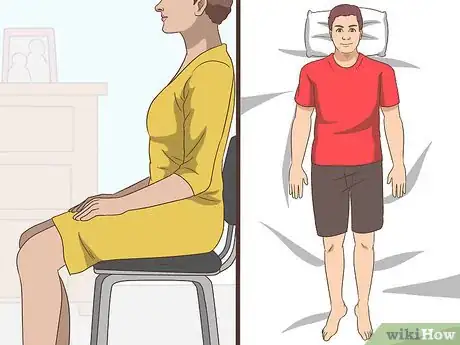
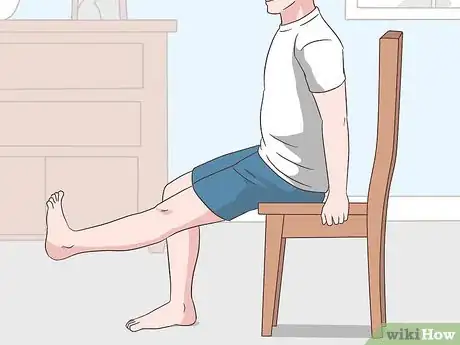
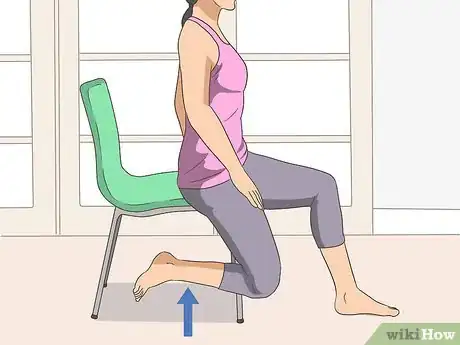
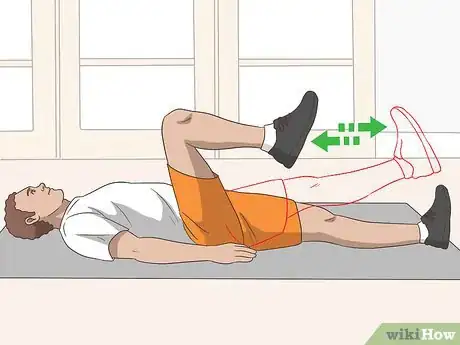

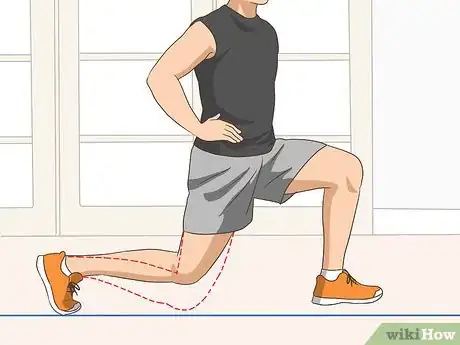
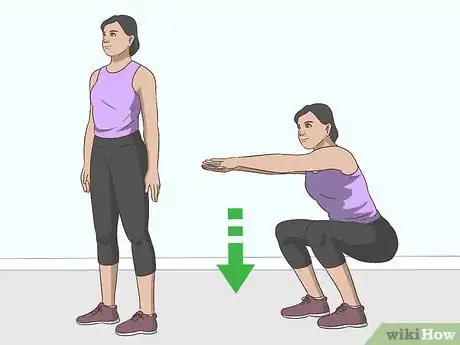
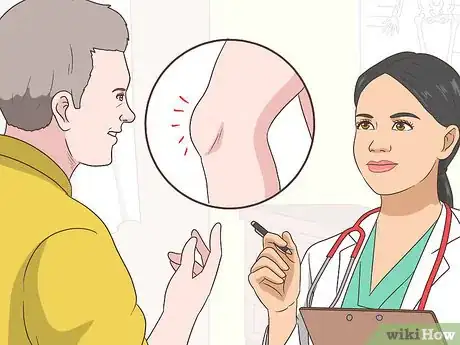

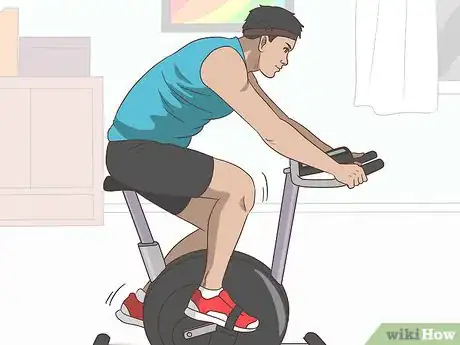

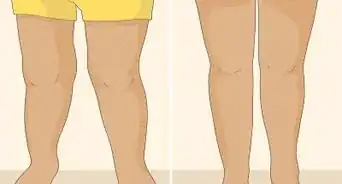
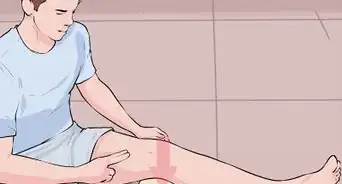
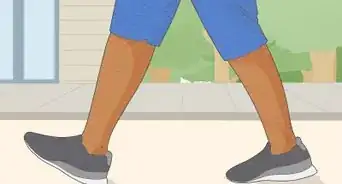
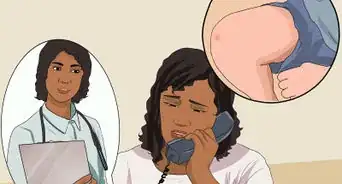

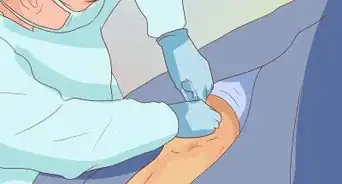
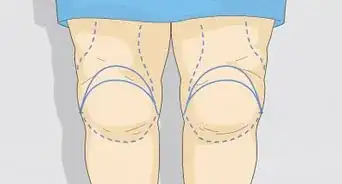
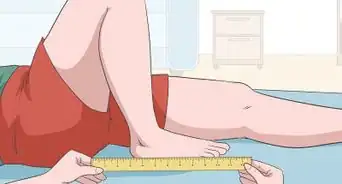


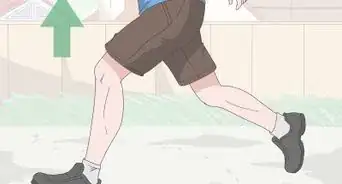









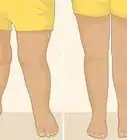






































Medical Disclaimer
The content of this article is not intended to be a substitute for professional medical advice, examination, diagnosis, or treatment. You should always contact your doctor or other qualified healthcare professional before starting, changing, or stopping any kind of health treatment.
Read More...